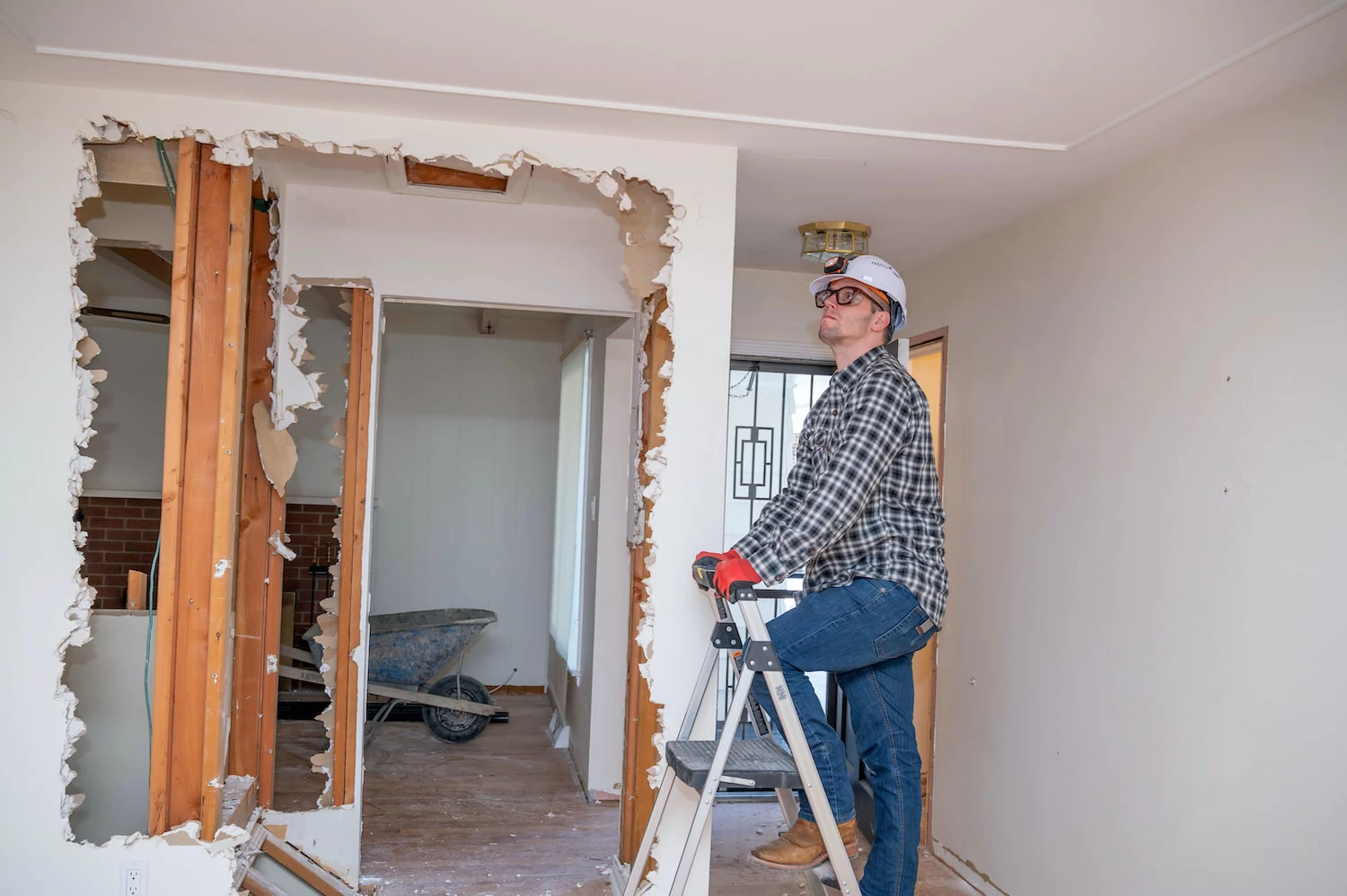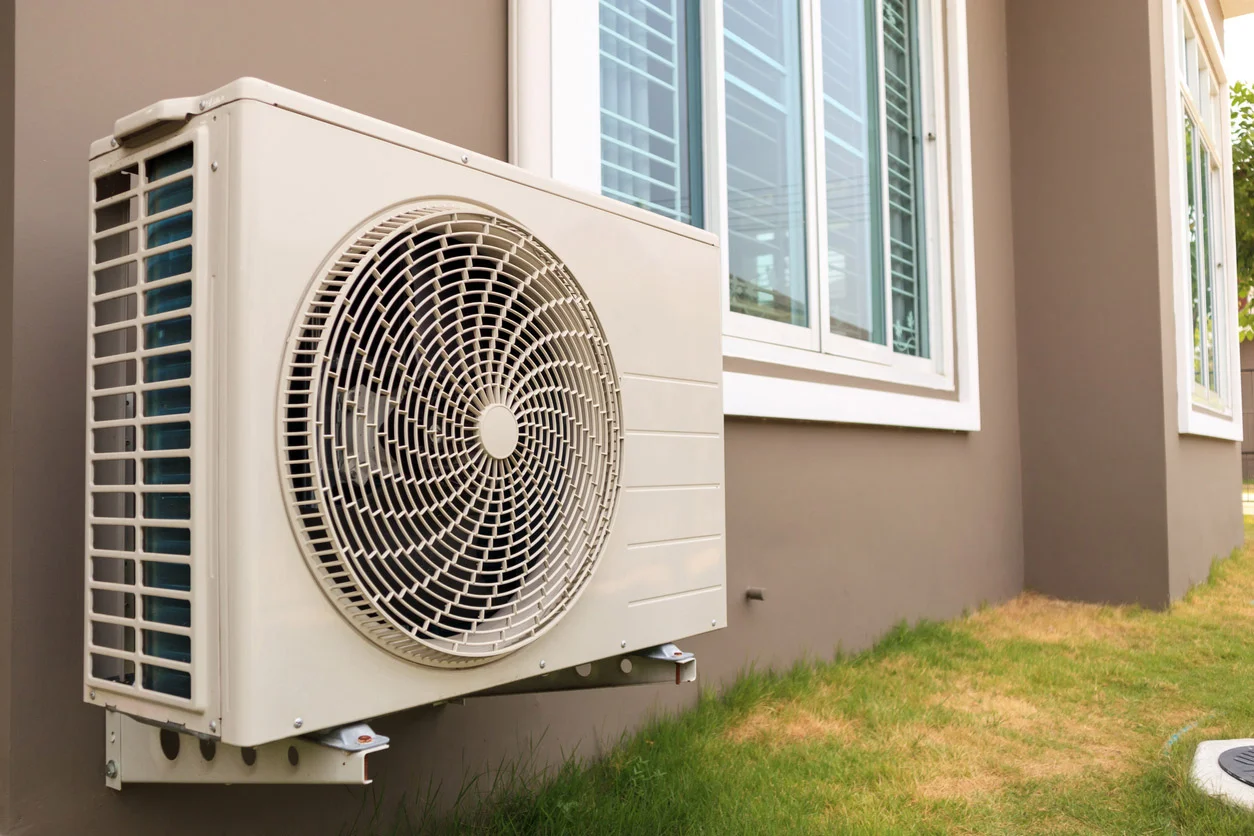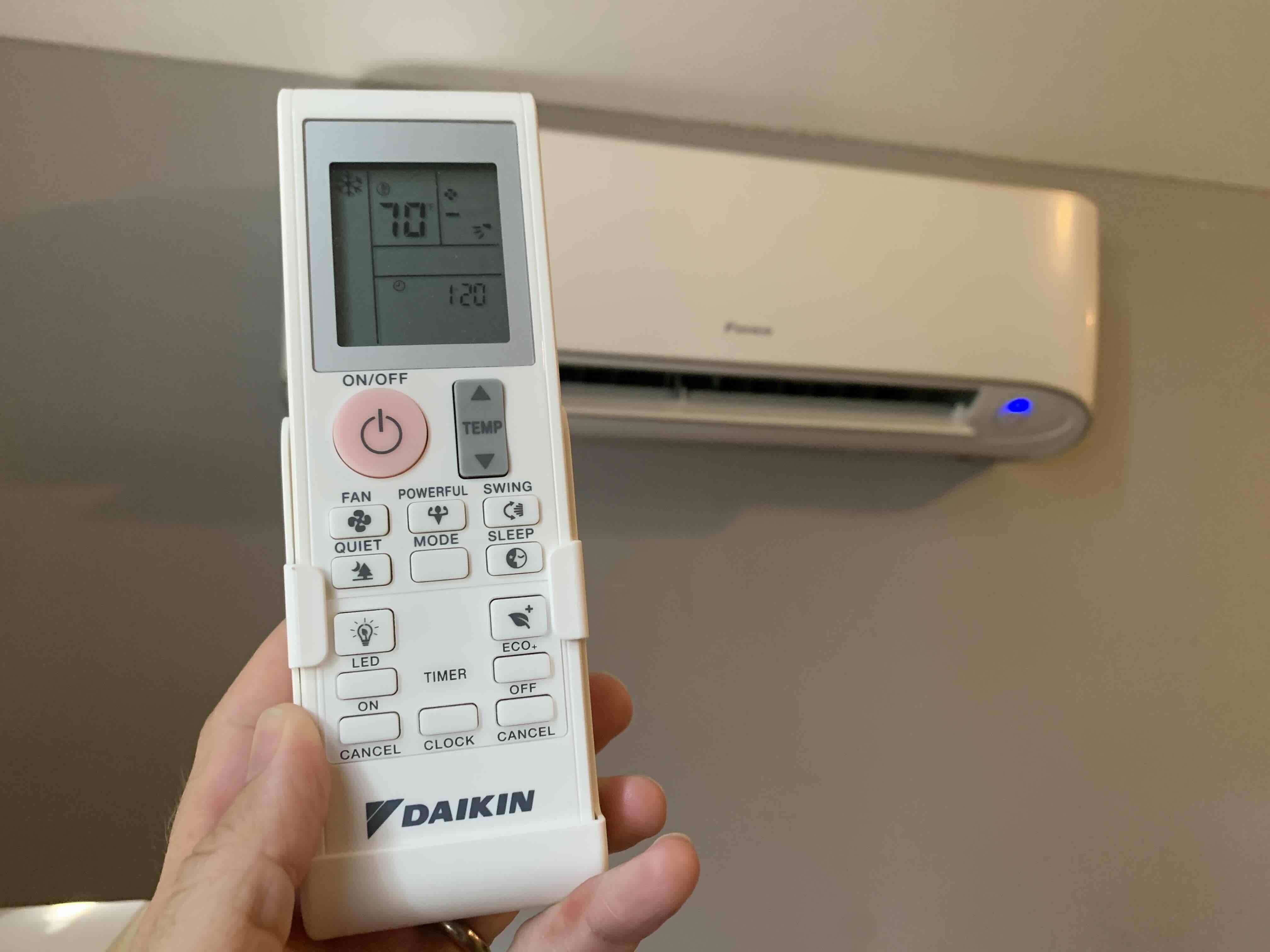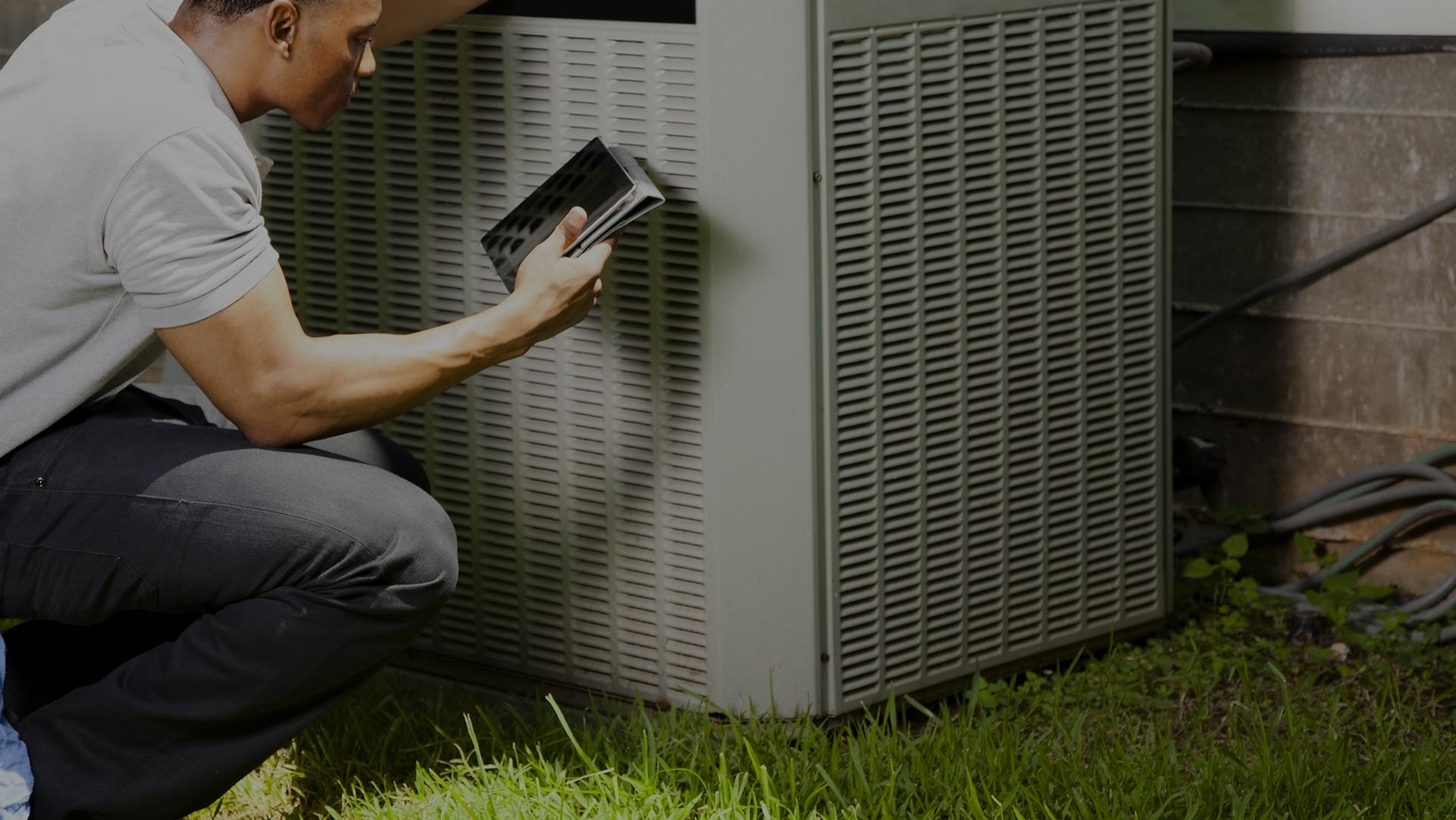Home>Home Maintenance>What Does Demolition Mean In Home Repair


Home Maintenance
What Does Demolition Mean In Home Repair
Modified: March 6, 2024
Learn what demolition means in home repair and how it plays a crucial role in the process of home maintenance.
(Many of the links in this article redirect to a specific reviewed product. Your purchase of these products through affiliate links helps to generate commission for Storables.com, at no extra cost. Learn more)
Introduction
Welcome to the world of home repair! Whether you are a seasoned homeowner or just starting out, it’s important to understand the ins and outs of maintaining your humble abode. One crucial aspect of home maintenance is demolition. While the idea of tearing things down may seem counterintuitive to the idea of repairing, it plays a crucial role in the renovation and remodeling process.
In this article, we will delve into the concept of demolition in home repair. We will explore its definition, the reasons for its necessity, the tools and equipment used, safety measures to be taken, the steps involved in the process, and the environmental considerations to keep in mind. So, let’s strap on our hard hats and get ready to learn all about demolition!
Key Takeaways:
- Demolition in home repair involves carefully dismantling structures to make way for improvements. It requires planning, safety measures, and consideration for the environment to ensure a successful renovation.
- Prioritizing safety, obtaining permits, and consulting professionals are crucial for a smooth demolition process. Environmental considerations, such as waste management and recycling, contribute to sustainable home repairs.
Read more: What Does R-5 Insulation Mean
Definition of Demolition in Home Repair
Demolition in the context of home repair refers to the process of intentionally dismantling or removing a part or structure of a house or building. It involves tearing down walls, removing fixtures, or taking apart any element that needs to be replaced, repaired, or completely eliminated. Demolition is a crucial step in various home improvement projects, such as renovations, remodels, or even preparing for new construction.
This process allows homeowners or contractors to make necessary changes to their homes by removing old or damaged components. It can involve partial demolition, where only specific areas or parts of a structure are removed, or complete demolition, where an entire structure is taken down.
Demolition is not merely about destruction; it requires careful planning and execution to ensure safety and effectiveness. It involves strategic deconstruction and removal to prepare for the subsequent stages of the repair or construction process.
When conducting a demolition, it is essential to assess the scope and nature of the project to determine the appropriate method to use. This assessment will help determine whether manual labor or the use of specialized equipment is required. Additionally, understanding the structural integrity and potential hazards of the area will inform the demolition process and allow for proper precautions to be taken.
Overall, demolition is a vital aspect of home repair that allows for the removal of old, damaged, or unwanted structures or components and paves the way for new improvements or renovations. It is an important step in transforming a house into a dream home.
Reasons for Demolition
Demolition in home repair serves various purposes, each driven by specific reasons and objectives. Let’s take a closer look at some of the common reasons why demolition may be necessary:
- Structural Instability: Over time, a structure may become weak or unstable due to age, weather damage, or inadequate construction. Demolition allows for the removal of these compromised elements so that new, sturdy structures can be built in their place.
- Outdated Design: Older homes often have outdated layouts or design elements that no longer meet the needs or preferences of homeowners. Demolition allows for the removal of walls, partitions, or entire sections of a house to create a more functional and modern living space.
- Damage and Decay: In cases of severe damage from natural disasters, water leaks, pests, or mold, demolition may be the most practical solution. Removing the affected areas enables homeowners to rebuild and restore their homes to a safe and habitable condition.
- Expansion or Addition: When homeowners desire to increase the size or add new sections to their homes, demolition is often necessary. It allows for the removal of existing structures or walls to create space for new additions or extensions.
- Upgrading Utilities: Plumbing, electrical, and HVAC systems may need to be upgraded or replaced over time. Demolition can be conducted to access and remove old systems, making way for the installation of new and improved utilities.
- Removal of Hazardous Materials: In some cases, demolition is required to eliminate hazardous materials such as asbestos or lead paint. These materials pose significant health risks, and their removal is necessary to ensure the safety of occupants.
It is important to note that demolition should always be done with careful consideration and planning. Before undertaking any demolition project, it is advisable to consult with professionals to assess the feasibility and potential impact of the demolition on the overall structure of the house.
By understanding the reasons for demolition in home repair, homeowners can make informed decisions and embark on projects that will enhance the functionality, safety, and aesthetic appeal of their living spaces.
Tools and Equipment used in Demolition
Demolition in home repair requires a range of specialized tools and equipment to effectively and safely dismantle structures or remove unwanted components. Here are some commonly used tools and equipment in the demolition process:
- Sledgehammer: A sledgehammer is a large, heavy-duty hammer with a long handle that is used to deliver significant force for breaking down walls, removing tiles, or demolishing small structures.
- Reciprocating Saw: Also known as a “demo saw” or “Sawzall,” a reciprocating saw is a versatile power tool that uses a push-and-pull motion to cut through various materials like wood, metal, or drywall. It is ideal for cutting through walls, pipes, or nails.
- Demolition Hammer: A demolition hammer, often called a “jackhammer,” is a heavy-duty power tool used to break through concrete, masonry, or other hard surfaces. It delivers high impact blows, making it effective for large-scale demolition projects.
- Handheld Chisel: A handheld chisel is a manual tool with a sharp edge used for precise cutting or chipping away materials like concrete or stone. It is useful for detail-oriented demolition work or removing small sections of structures.
- Excavator: For more significant demolition projects, an excavator is commonly used. This heavy machinery has a long arm with a bucket attachment that can be used to demolish and remove larger structures, such as walls or whole buildings.
- Skid Steer Loader: A skid steer loader, or “Bobcat,” is a compact construction machine that is versatile and maneuverable. It can be equipped with various attachments, such as grapples or breakers, making it suitable for demolition work in tight spaces.
- Dumpster: During demolition, debris and waste materials need to be properly disposed of. A dumpster or large container is used to collect and transport the debris, ensuring it is safely and efficiently removed from the site.
- Protective Gear: Demolition work can be hazardous, so it is crucial to prioritize safety. Protective gear, including hard hats, safety goggles, gloves, steel-toed boots, and masks, should be worn to protect against potential injuries, falling debris, dust, or harmful substances.
It is important to remember that different demolition projects may require additional specialized tools or equipment based on the scope and nature of the job. In more complex demolition scenarios, consulting with professionals or hiring a licensed demolition contractor may be necessary to ensure the proper tools and equipment are used for the project.
By utilizing the appropriate tools and equipment, homeowners can effectively and efficiently carry out demolition work, setting the stage for successful home repairs or renovations.
When doing demolition in home repair, always wear protective gear such as gloves, goggles, and a mask to prevent injury and exposure to dust and debris.
Safety Measures during Demolition
Demolition work in home repair can be risky and dangerous if proper safety measures are not followed. It is crucial to prioritize safety to protect both the workers involved in the demolition process and the occupants of the building. Here are some essential safety measures to implement during demolition:
- Wear Personal Protective Equipment (PPE): All individuals involved in the demolition process should wear appropriate personal protective equipment, including hard hats, safety goggles, gloves, steel-toed boots, and masks. PPE helps protect against head injuries, eye injuries, hand injuries, and respiratory hazards.
- Secure the Work Area: Before starting any demolition work, it is important to secure the work area. This includes posting warning signs, cordoning off the area, and restricting access to ensure that only authorized personnel are present.
- Inspect the Structure: Thoroughly inspect the structure before demolition to identify any potential hazards, such as asbestos, lead paint, or weak structural components. Engage professionals to conduct proper inspections and tests if necessary.
- Turn Off Utilities: Before starting demolition work, ensure that all utilities, including electricity, gas, and water, are properly turned off and disconnected. It is crucial to avoid accidental contact with live wires or active systems.
- Control Dust and Debris: Demolition work generates a significant amount of dust and debris. Implement measures to control and minimize dust, such as using water to dampen surfaces, using dust containment systems, or employing air filtration systems.
- Follow Proper Demolition Techniques: Adhere to proper demolition techniques for each specific task. Use tools and equipment correctly, and avoid unsafe practices, such as swinging tools overhead, standing on unstable surfaces, or using excessive force.
- Proper Waste Disposal: Dispose of demolition debris and waste materials responsibly. Use designated containers or dumpsters for waste disposal and ensure adherence to local regulations and guidelines for proper disposal methods.
- Regular Communication: Effective communication between all individuals involved in the demolition process is essential. Clearly convey instructions, potential hazards, and emergency procedures to ensure everyone is aware and informed.
- Emergency Preparedness: Have a well-defined emergency plan in place. Identify emergency exits, provide fire extinguishers, and ensure that all workers are aware of evacuation procedures and first aid protocols.
- Consult Professionals: In complex or large-scale demolition projects, it is advisable to consult with professionals or hire licensed demolition contractors. Their expertise and experience can help ensure that safety protocols are followed, minimizing risks and hazards.
Remember, safety should always be the top priority during demolition work. By implementing these safety measures and being vigilant throughout the process, homeowners and workers can mitigate risks and carry out successful and accident-free demolitions.
Read more: What Does Organic Mean In Home Decor
Steps in the Demolition Process
The demolition process in home repair involves several crucial steps to ensure the safe and efficient removal of structures or components. While each demolition project may vary, here are the general steps typically followed in the demolition process:
- Planning and Evaluation: Start by assessing the scope of the project. Identify the specific structures or components that need to be demolished and determine the feasibility of the project. Conduct a comprehensive evaluation of the site to identify any potential hazards or obstacles.
- Obtaining Permits: Check local regulations and obtain the necessary permits before starting any demolition work. Depending on the nature and scale of the project, permits may be required to ensure compliance with safety and environmental standards.
- Utility Disconnection: Safely disconnect and shut off all utilities, including electricity, gas, and water, to prevent any accidents or damage during the demolition process. Consult with professionals if needed to ensure the proper disconnection of utilities.
- Removal of Hazardous Materials: If the structure or components contain hazardous materials, such as asbestos or lead, those materials must be safely removed following the appropriate protocols and regulations. Engage professionals with expertise in hazardous material removal if necessary.
- Protective Measures: Implement safety measures, including the use of personal protective equipment (PPE), to ensure the safety of workers and mitigate potential risks. Install temporary fencing or barriers to secure the work area and prevent unauthorized access.
- Demolition Techniques: Select the appropriate demolition techniques based on the nature of the structures or components to be demolished. This may involve hammering, sawing, cutting, or using heavy machinery, depending on the size and complexity of the project.
- Deconstruction: Begin the deconstruction process by removing fixtures, fittings, and non-structural elements. Clear out any furniture, appliances, or personal belongings from the area to be demolished. Salvage or recycle materials whenever possible to minimize waste.
- Structural Demolition: Once the area is clear, proceed with the demolition of walls, partitions, or structures as planned. Use appropriate tools, equipment, and techniques to carefully dismantle or break down the targeted areas while ensuring the structural integrity of the surrounding areas.
- Waste Management and Cleanup: Properly manage and dispose of demolition debris and waste materials. Use designated containers or dumpsters for efficient waste removal. Conduct thorough cleanup of the site to ensure it is safe and ready for the next phase of the repair or construction process.
- Site Restoration: If necessary, carry out site restoration activities, such as backfilling holes, leveling the ground, or planting vegetation, to return the area to its pre-demolition state. This step may vary depending on the future plans for the site.
- Final Inspection: Conduct a final inspection of the demolition site to ensure all structures or components were properly removed and the area is safe for the next phase of the project. Address any remaining safety concerns or issues before proceeding further.
It is important to note that demolition projects should be carried out by trained professionals or under their supervision. They have the expertise and experience to plan and execute demolitions safely and efficiently while adhering to all necessary guidelines and regulations.
By following these steps, homeowners or contractors can navigate the demolition process effectively, setting the stage for successful home repairs or renovations.
Environmental Considerations in Demolition
Demolition in home repair can have environmental implications, and it is important to consider sustainability and minimize the negative impact on the environment. Here are some key environmental considerations to keep in mind during the demolition process:
- Waste Management and Recycling: Implement proper waste management practices during demolition. Separate materials, such as wood, metal, concrete, and plastics, for recycling. Promote the reuse of salvaged materials whenever possible to reduce the amount of waste sent to landfills.
- Hazardous Material Handling: Identify and handle hazardous materials, such as asbestos, lead-based paint, or chemicals, in accordance with local regulations. Engage professionals who are certified in handling hazardous materials to ensure their safe removal and disposal.
- Energy Efficiency: Assess the energy efficiency of the demolished structures or components. Look for opportunities to salvage or incorporate energy-efficient elements, such as windows, doors, or insulation, in the reconstruction or remodeling phase.
- Water Conservation: Take measures to conserve water during the demolition process. Implement practices to prevent excessive water usage and minimize water runoff. Consider capturing and recycling rainwater for future use on-site.
- Air Quality Management: Control and manage dust, pollutants, and airborne particles generated during demolition. Use water sprays, dust control systems, or air filtration devices to reduce dust emissions and protect air quality in and around the demolition site.
- Native Vegetation Preservation: Consider preserving native vegetation or trees on the demolition site, if feasible. Trees provide numerous environmental benefits, including air purification, shade, and habitat for wildlife. Protecting them contributes to ecosystem integrity.
- Erosion and Sediment Control: Implement erosion and sediment control measures during and after the demolition process. Use erosion control barriers, silt fences, or sediment basins to prevent soil erosion and minimize the impact of runoff on nearby water bodies.
- Noise and Vibration Control: Minimize noise and vibration disturbances during demolition. Use appropriate techniques and equipment to mitigate noise levels, especially in residential areas, to minimize disruption to neighboring properties and wildlife habitats.
- Environmental Site Assessment: Prior to demolition, conduct an environmental site assessment. This assessment evaluates the potential presence of contaminants or pollutants in the soil, groundwater, or air. It helps identify any environmental risks and informs proper mitigation strategies.
- Environmental Compliance: Ensure compliance with all applicable environmental laws, regulations, and permits throughout the demolition process. This includes adhering to waste management guidelines, hazardous material handling protocols, and environmental impact assessment requirements.
By considering these environmental factors during the demolition process, homeowners and contractors can work towards minimizing their ecological footprint and promoting sustainable practices. It not only helps protect the environment but also contributes to a healthier and more sustainable future.
Conclusion
Demolition is an integral part of the home repair process, allowing homeowners to make necessary changes, repairs, or renovations to their living spaces. It involves the intentional dismantling or removal of structures or components to pave the way for new improvements. By understanding the various aspects of demolition, homeowners can navigate the process more effectively and efficiently.
In this article, we explored the definition of demolition in home repair, the reasons behind its necessity, the tools and equipment used, safety measures to be taken, the steps in the demolition process, and the environmental considerations to keep in mind. We learned that demolition is not simply about destruction, but a carefully planned and executed process that requires expertise, proper tools, and safety precautions.
Throughout the demolition process, it is crucial to prioritize safety for the workers involved and the occupants of the building. Personal protective equipment (PPE), proper planning, evaluation, and adherence to safety protocols are all essential elements. Environmental considerations, such as waste management, recycling, preservation of native vegetation, and minimizing the impact on air and water quality, are crucial for sustainable construction practices.
Before undertaking any demolition project, it is important to assess the scope, obtain necessary permits, consult professionals when needed, and comply with local regulations. Engaging experts ensures the demolition process is carried out efficiently, safely, and in compliance with environmental standards.
In conclusion, demolition plays a vital role in home repair, enabling homeowners to transform and improve their living spaces. By understanding the definition, reasons for demolition, tools and equipment used, safety measures, demolition process steps, and environmental considerations, homeowners can make informed decisions and embark on successful home repair projects.
Remember, whether you’re demolishing a wall to create an open concept or tearing down an entire structure, taking the time to plan, prioritize safety, and be environmentally conscious will set the stage for a smooth and rewarding home repair journey.
Frequently Asked Questions about What Does Demolition Mean In Home Repair
Was this page helpful?
At Storables.com, we guarantee accurate and reliable information. Our content, validated by Expert Board Contributors, is crafted following stringent Editorial Policies. We're committed to providing you with well-researched, expert-backed insights for all your informational needs.














